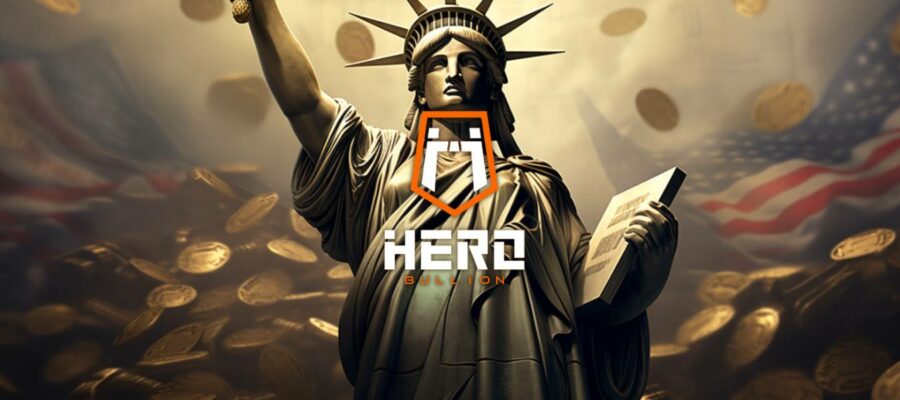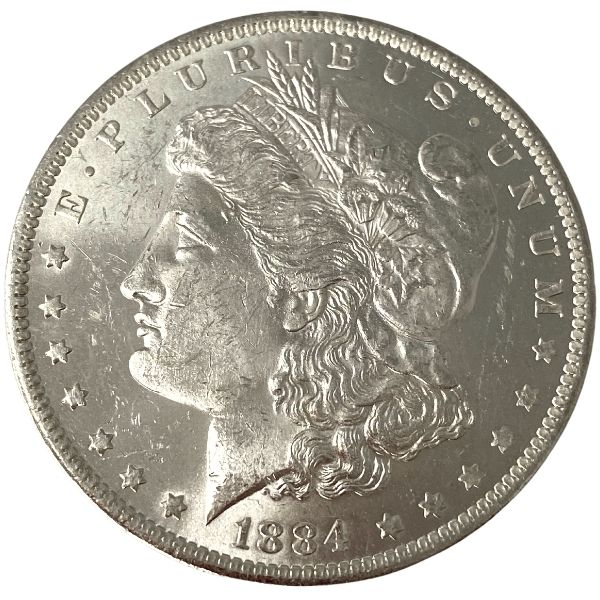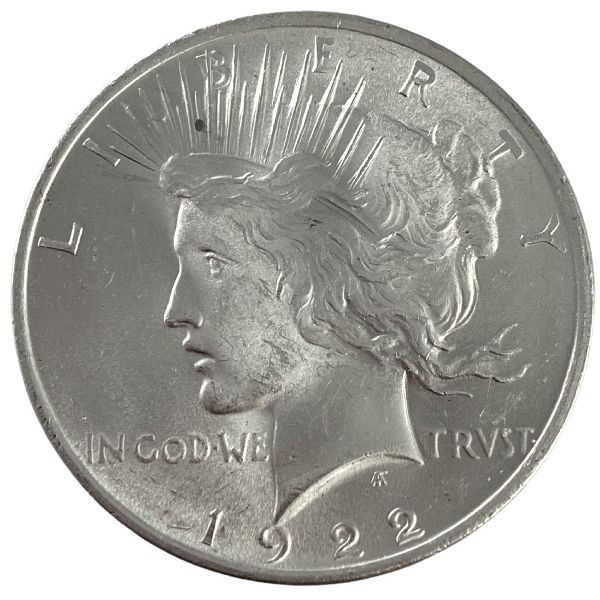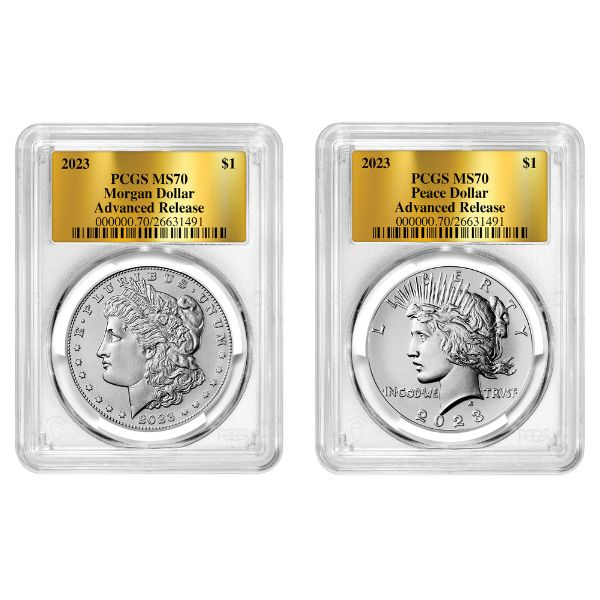The Ladies Behind Lady Liberty: An Untold History of American Coinage Models

Whether you’re a silver stacker or a certified numismatist, you probably already understand why silver dollars are such a popular investment. Silver currency coins minted before 1964 are composed of 90% pure silver, and their low premiums make them a great choice for budget investors and cost-conscious investors alike.
There’s another reason why silver coins from early American history are so popular, though. Even heavily damaged, weathered coins are often treasured by collectors. Why do people love old silver dollars? The answer is history.
Each silver dollar we sell comes with its own story. It’s easy to imagine that silver coins are just another part of the massive business known as the United States Mint. The reality is much more complicated.
Behind every old silver coin is an artist, a team of numismatists and advisors, and a model. The brilliant artists behind the Peace, Morgan, and Barber coins have been talked about for decades. There’s no denying their talent – and their contributions to American coinage.
But what about their models, those women who posed for hours at a time to help the artist bring Lady Liberty to life? Oftentimes, American coinage models have been reduced to minor anecdotes, just a minor part of the larger story of the U.S. Mint’s groundbreaking coin designs.
This is a shame, considering that some of the women we’ll talk about in this guide have appeared on coins for over 100 years straight.
Today, we’re diving into an untold story in the history of American coinage: the ladies behind Lady Liberty.
Who is the Lady on American Silver Coins?
For avid coin collectors, this answer should be pretty easy. Since the late 1800s, the vast majority of American currency coins have included an obverse depiction of Lady Liberty. Yes – that Lady Liberty!
On American coins, Liberty appears in many forms. Sometimes, she’s seated and draped in an American flag. Other times, she wears a flowing gown and walks proudly toward a rising sun. Whatever her appearance, you’ll be able to spot the influences of Lady Liberty on hundreds of coins throughout America’s history.
Brief Background: Lady Liberty as a Symbol
Lady Liberty is famous in the United States because of the Statue of Liberty. A gift from France erected in 1886, the statue now sits on Liberty Island in New York City. She wears a crown and holds a massive torch high into the air. The spot is, of course, a popular tourist attraction.
But the actual history of Lady Liberty is quite a bit older than her statuesque namesake. The modern concept of Lady Liberty is modeled after an Ancient Roman goddess, Libertas. Libertas is the feminine personification of Liberty.
During the early modern period, French nationalists began to associate Libertas with their cause. On the Great Seal of the French Republic (1848), she appears in a form shockingly similar to the ‘Seated Liberty’ coin design that the United States would later adopt.
Of course, Liberty is primarily associated with the United States in the contemporary era. At the onset of the American War of Independence, propaganda posters began to use Lady Liberty on their mastheads, signaling her transformation into an American icon and symbol.
Establishing a Coin Design Tradition
If you look around at the coinage traditions of other countries, you’ll notice that the consistent presence of Lady Liberty is nothing abnormal. Take the Royal Mint’s Silver Britannia Coin as an example. Each release of this classic silver piece features an obverse depiction of Britannia, the feminine personification of Great Britain.
It’s not surprising, then, that U.S. Mint leaders decided to integrate the country’s most important cultural symbols into their circulation silver dollars and other coins.
Finding the Ladies Behind Lady Liberty
It’s rare for an artist to be able to depict a figure without first securing a model. Human models have been used for coinage for generations, and their contributions to coinage are important to acknowledge.
Throughout the history of American coinage, several different models have been immortalized as Lady Liberty on some of our most famous coins.
Let’s take a look at the history of American coinage models. Any annotated history of standardized American circulation silver would be incomplete without addressing what is perhaps the most recognizable of all U.S. silver dollars: the Morgan Dollar.
The Morgan Dollar (1878-1904, 1921)
First minted in 1878, the Morgan Silver Dollar is likely the coin that kicked off America’s centuries-old fascination with collecting silver coins. The piece is struck with .90 fine silver bullion. That’s right – silver coins used to be actual silver!
On the reverse side of this coin, you’ll find one of the U.S. Mint’s first attempts at using the bald eagle as a national symbol on their coinage. Here, the eagle flies into the air while holding a bundle of arrows and an olive branch in its talons. If you take a close look at some of our old American silver coins, you’ll get the sense that symbolism was a core consideration in the mint’s design philosophy.

For the purposes of this guide, we’ll put most of our focus on the obverse side of the coin. Mint designer George T. Morgan decided to decorate this side of the Morgan Dollar with the profile of Lady Liberty’s face. Here, she wears a headband inscribed “Liberty,” along with a bonnet.
Of course, Morgan never actually met the Roman Goddess Libertas. To pull off one of the most popular designs in the history of American coinage, he sought the assistance of a teacher and philosopher named Anna Willess Williams.
The Coin’s Model: Anna Willess Williams
Anna Willess Williams is the woman who appears on the obverse of the Morgan Dollar.
Obviously, Morgan altered her features slightly to turn her into America’s most recognizable symbol, Lady Liberty.
Williams was not a professional model by trade. She’d published several papers on psychology and teaching philosophy before she was approached by George T. Morgan. Williams had posed for art before, and Morgan got in touch with her through artist Thomas Eakins.
Interestingly enough, Williams was never particularly happy about her role in the creation of the Morgan Dollar. In one historical record, she referred to her modeling career with Morgan as an “incident of [her] youth.” Part of her reluctance to talk about that period of her life has to do with the newfound fame she experienced following the release of the coin.
Despite Mrs. Williams’ dissatisfaction with her short-lived modeling career, her influence on American coinage is undeniable. While it was initially not particularly popular among coin collectors, the Morgan Dollar has become one of the most popular and best-selling silver dollars of all time.
In 2023, the U.S. Mint brought her back into the spotlight when they released their .999 bullion Morgan and Peace Silver Dollar Sets. Once again, the gifted teacher shined in coin collections as Lady Liberty.
Barber Dimes (1892-1916)
Like the Morgan Dollar, the Barber Dime was met with controversy from the coin collecting community following its release. The United States Mint solicited designs for a new circulation dime using a competition.
Because very few professional artists entered the cash-prize contest and the mint was unimpressed by public submissions, the task of creating the new American dime fell on Chief Engraver Charles E. Barber.
The obverse of this ill-received coin features the ‘head of Liberty.” Rather than a woman, this version of Liberty seems to emphasize a masculine figure of liberty. Why did this coin feature such a radically different concept of Libertas than its predecessor?
To answer this question, we’ll actually have to turn to the very country that kicked off our fascination with Lady Liberty: France.
Inspired by French Coinage
To make this classic American dime, Charles E. Barber received his inspiration from the existing currency coins manufactured by France. If you look at some of France’s coins from this period, you’ll notice the similarities.
Unfortunately, it’s unclear which woman sat as the model for the Barber Dime. The design did help to cement Lady Liberty as a fixture for future American circulation coins.
Peace Dollars (1921-1935)
The Peace Dollar is often lumped in with the Morgan Silver Dollar. Today, these two coins are two of the most popular early silver dollars traded among coin collectors and numismatists. The debate leading up to this coin’s design was long, and American coin collectors began to lobby Congress to ensure that the coin would help commemorate American victory in World War One.
This resulted in one of the most fascinating and symbolic coin designs in American history. The Peace Silver Dollar’s reverse significantly improves upon the Morgan’s design of the bald eagle. Here, the bird perches on a rock and watches the sun as it rises.

As you’ve probably already guessed, the obverse of the Peace Dollar features Lady Liberty. Her hair flows in the wind, and she wears a crown that looks much like the sun rays featured on the obverse of the coin.
Who’s the lady on the front of the Peace Dollar? The woman who modeled as Lady Liberty on this coin was Teresa de Francisci, wife of mint artist Anthony de Francisci.
Teresa de Francisci as Lady Liberty
Francisci entered his design into a 1921 competition meant to decide the appearance of the next U.S. silver dollar. To pioneer the modern design of Lady Liberty that the coin is known for, he enlisted the help of his wife, Teresa de Francisci.
Mrs. Francisci hadn’t been a professional model before appearing on the Peace Silver Dollar. According to an interview with her husband, they opened his studio window and allowed the wind to blow her hair back. This created the unique effect we see on the final version of the Peace Dollar.
While Francisci used his wife as the model for his most famous work of art, he emphasized to reporters that the face is ultimately a composite. In other words, he altered certain parts of Teresa’s face to better represent how he felt Lady Liberty ought to look.
To coin collectors, the Peace Silver Dollar is one of the most fascinating coins in American history. Released right on the heels of the conclusion of WW1, the coin’s hefty symbolism reminds collectors of both America’s history and the exaltation of peace enjoyed after the end of the “Great War.”
Walking Liberty Half Dollar (1916-1947)
Of all the coins in this guide, the Walking Liberty Half Dollar is probably the most recognizable to non-numismatists. This coin was also minted for the longest period of time compared to the other coins we spoke about above.

Part of the coin’s recognizability has to do with the distinctly modern American Silver Eagle. This .999 bullion coin is released yearly and bears a remarkably low number of alterations to mint artist Adolph A. Weinman’s original design.
On this coin, Lady Liberty is on the move. She gestures proudly while walking toward a rising sun and carrying a bundle of branches.
Weinman didn’t choose to use his wife or an unknown face for his depiction of Lady Liberty. Who’s the model for the Walking Liberty Half Dollar? The distinction goes to a renowned model of the era named Audrey Munson.
Audrey Munson’s Lasting Cultural Impact
Munson was already very famous before she chose to pose for the new Walking Liberty Half Dollar. She appeared in a number of movies and was dubbed “American Venus” by her fans and newspapers. In many ways, Munson was the precursor to the modern American supermodel.
Her popularity and beauty made her an easy choice for Weinman, who employed her as the model for his brand new Walking Liberty Half Dollar.
Perhaps more than any other American coinage model we’ve covered in this guide, Mrs. Munson’s cultural impact is unprecedented. She didn’t just appear on the Walking Liberty Half Dollar, which was discontinued in 1947.
The original design of Walking Liberty that she posed for is still used today. Each year, the United States Mint releases a new run of the beloved American Silver Eagle Coin. And each time they do this, they remind onlookers of the story of Audrey Munson, “American Venus.”
Final Thoughts: American Coinage Models
There have been thousands of articles and hundreds of novels written about American coins and their designers. However, there’s another group of people who lay claim to the legacy of the beautiful coin that stackers love to collect.
Lady Liberty is a national icon, and she’s appeared on almost every major U.S. coin since the late 1800s. But today, we decided to take a look past the torch and discover the Ladies behind Lady Liberty.
You might also be interested in:
About The Author
Michael Roets
Michael Roets is a writer and journalist for Hero Bullion. His work explores precious metals news, guides, and commentary.
